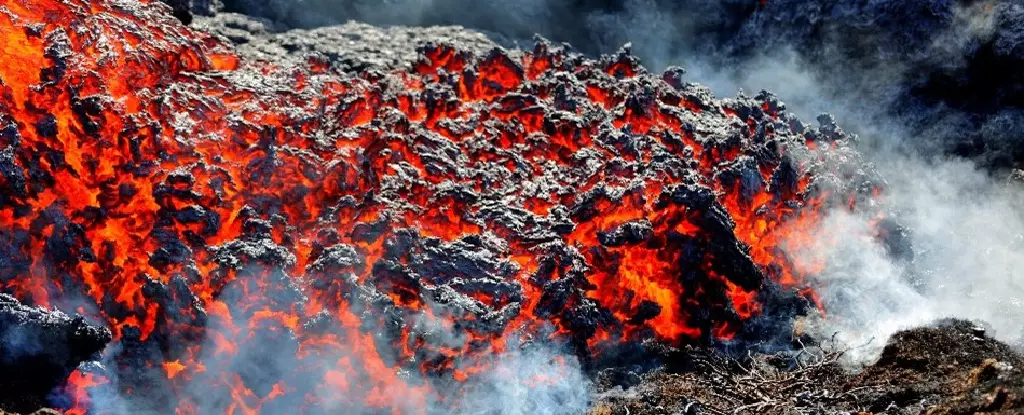In recent years, the volcanoes on Iceland’s Reykjanes Peninsula have experienced a resurgence in activity after almost 800 years of dormancy. This upsurge has led to eight eruptions since 2021, causing concern among researchers and residents alike. The renewed ferocity of these volcanic events has been linked to a shallow pool of magma located just 10 kilometers below the surface.
A study conducted by geologist Valentin Troll and his colleagues from Uppsala University in Sweden has shed light on the underlying causes of the volcanic activity in the region. By analyzing seismic wave data and earthquake ‘swarms’, the researchers were able to map the subsurface of the Reykjanes Peninsula. They discovered that the 2021 eruptions of the Fagradalsfjall volcanic system were fueled by a pocket of magma, which then flowed to Sundhnúkur, resulting in ongoing lava spewing since late 2023.
The similarity in the geochemical ‘fingerprints’ of the lavas from both eruption zones suggests a connected magma plumbing system between the two volcanic systems. Historical data indicates that this shared magma pool formed sometime between 2002 and 2020, was recharged in 2023, and continues to feed magma to surface fissures and vents. The replenishment of the magma pool from deeper in the mantle indicates that these eruptions could persist for decades.
The identification of the magma pool has raised concerns about the safety of residents in the region. Continuous monitoring and mapping of the magma pool are essential for preparing communities for potential evacuations and disruptions. Key infrastructure, such as geothermal power plants and carbon sequestration facilities, could be at risk of damage from frequent eruptions. The ongoing volcanic activity on Iceland’s Reykjanes Peninsula highlights the unpredictability of nature and the importance of continued monitoring in the years to come.
While the recent increase in volcanic activity on the Reykjanes Peninsula is cause for concern, it also presents an opportunity for researchers to study and understand the underlying processes of volcanic eruptions. By monitoring the magma supply system and preparing for potential disruptions, authorities can ensure the safety of residents and infrastructure in the region. The ongoing volcanic activity serves as a reminder of Iceland’s geologic volatility and the need for proactive measures to mitigate its impacts.

Leave a Reply